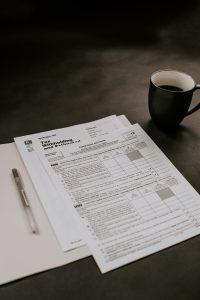Forex sentiment, sometimes referred to as market sentiment, is a key factor in determining the direction of currencies in the foreign exchange market. It refers to the overall feeling or attitude of traders towards a particular currency or the market as a whole. Understanding forex sentiment can help traders make better-informed decisions and improve their trading strategies. In this article, we will explore how to use forex sentiment to your advantage.
What is forex sentiment?
Forex sentiment is the overall feeling or attitude of traders towards a particular currency or the market as a whole. It can be influenced by a variety of factors, including economic data releases, geopolitical events, and market news. Forex sentiment can be bullish or bearish, depending on whether traders are optimistic or pessimistic about the market.
How to measure forex sentiment?
There are several ways to measure forex sentiment. One of the most common methods is through the use of technical analysis tools, such as trend lines and moving averages. These tools can help traders identify key support and resistance levels, which can provide valuable information about market sentiment.
Another popular method is through the use of fundamental analysis. This involves analyzing economic data releases, such as GDP and inflation figures, and geopolitical events to determine their impact on market sentiment. News releases can also provide valuable insights into market sentiment, as they often reflect the views and opinions of traders and analysts.
Finally, sentiment indicators can be used to measure market sentiment. These indicators are based on surveys of traders and investors, and they can provide valuable insights into market sentiment. Some of the most popular sentiment indicators include the Commitment of Traders (COT) report, which measures the positioning of large traders in the market, and the Economic Sentiment Indicator (ESI), which measures the overall sentiment of consumers and businesses.
How to use forex sentiment in trading?
Forex sentiment can be a valuable tool for traders, as it can help them make better-informed decisions and improve their trading strategies. Here are some ways to use forex sentiment in trading:
1. Identify key support and resistance levels: By analyzing market sentiment, traders can identify key support and resistance levels, which can provide valuable information about market trends and potential trading opportunities.
2. Determine market direction: Forex sentiment can also help traders determine the overall direction of the market. By analyzing the sentiment of traders, traders can determine whether the market is bullish or bearish, and adjust their trading strategies accordingly.
3. Identify potential trading opportunities: By analyzing market sentiment, traders can identify potential trading opportunities. For example, if sentiment is bullish towards a particular currency, traders may look for opportunities to buy that currency.
4. Manage risk: Forex sentiment can also be used to manage risk. By monitoring market sentiment, traders can identify potential risks and adjust their trading strategies accordingly. For example, if sentiment is bearish towards a particular currency, traders may reduce their exposure to that currency.
Conclusion
Forex sentiment is a key factor in determining the direction of currencies in the foreign exchange market. By understanding forex sentiment, traders can make better-informed decisions and improve their trading strategies. There are several ways to measure forex sentiment, including technical analysis, fundamental analysis, and sentiment indicators. By using forex sentiment in trading, traders can identify key support and resistance levels, determine market direction, identify potential trading opportunities, and manage risk.





